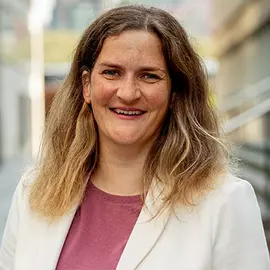Soft modular biomimetic exoskeleton to assist people with mobility impairments (XoSoft)
Description
Background: Between 2000 and 2050, the older population (80 years+) is projected to almost quadruple from approximately 100 million to 395 million people worldwide. Many of the elderly and patient groups such as stroke sufferers or patients with incomplete Spinal Cord Injuries (SCIs) experience varying degrees of mobility impairment. Assistive devices play a pivotal role in their lives and impact on their ability to live independently and perform basic tasks of daily living. There are currently 3.2 million wheelchair users in Europe and further 40 million people who cannot walk without an aid. Yet most assistive devices, such as powered wheel chairs, do not encourage or support the activation of legs. XoSoft, to be developed by a consortium of five research groups and three companies with EU project experience in exoskeleton/assistive orthotics development, is a class I medical device for these and other user groups to answer their need for low to moderate mobility assistance.
Objectives: The overall aim of this multidisciplinary research and innovation action is to develop a soft, modular, lower limb exoskeleton that elderly and disabled people with muscle weakness and/or a partial loss of sensory or motor function can wear to assist their leg strength and support, to increase their mobility and thereby improve their health and quality of life. XoSoft will employ smart soft robotics, biomimetic controlled actuation and connected health data feedback and interface. XoSoft will be:
- A highly customisable modular system, comprising an ankle-foot-knee module which can be worn on one or on both sides and a hip module
- Easy to wear, comfortable, serviceable and compatible with the daily life of the users
- Making use of advanced textiles and smart materials to create sensing, variable stiffness joints and actuation
- Controlled through biomimetics to identify the user’s motion and intention and to determine and provide the appropriate level of assistance
- Equipped with integrated health connectivity and analysis features to enable the wearer and their clinicians/therapists to review activity information and to register deterioration of the conditions at an early stage
- Developed with a user-centered design approach: following extensive testing in the lab, the concept is subject to trials in clinical settings and home environments.
Key Data
Projectlead
Co-Projectlead
Project team
Dr. Christoph Bauer, René Henke, Carole Pauli, Daniel Scherly
Project partners
Össur hf; Malteser Waldkrankenhaus Erlangen gGmbH / Geriatrie-Zentrum; accelopment AG; Roessingh Research and Development; University of Limerick; Saxion University of Applied Sciences; Spanish National Research Council; Italian Institute of Technology
Project status
completed, 02/2016 - 01/2019
Institute/Centre
Institute of Physiotherapy (IPT); Institute of Mechatronic Systems (IMS)
Funding partner
Horizon 2020 / Projekt Nr. 688175
Project budget
1'372'044 CHF
Further documents and links
Publications
-
Alteration of push-off mechanics during walking with different prototype designs of a soft exoskeleton in people with incomplete spinal cord injury : a case series
2021 Graf, Eveline; Bauer, Christoph; Pauli, Carole; Wirz, Markus
-
Pneumatic quasi-passive actuation for soft assistive lower limbs exoskeleton
2020 Di Natali, Christian; Sadeghi, Ali; Mondini, Alessio; Bottenberg, Eliza; Hartigan, Bernard; De Eyto, Adam; O'Sullivan, Leonard; Rocon, Eduardo; Stadler, Konrad; Mazzolai, Barbara; Caldwell, Darwin G.; Ortiz, Jesús
-
Development of an assistive soft exoskeleton : a multistakeholder endeavour
2019 Wirz, Markus; Bauer, Christoph; Pauli, Carole; Graf, Eveline
-
Can off-the-shelf inertial measurement units measure gait kinematics in patients with gait limitations?
2019 Pauli, Carole; Graf, Eveline; Wirz, Markus; Bauer, Christoph
-
An optimization approach to design control strategies for soft wearable passive exoskeletons
2019 Hidalgo Romero, Andres F.; Graf, Eveline; Rocon, Eduardo
-
Assessing usability of a prototype soft exoskeleton by involving people with gait impairments
2019 Graf, Eveline; Bauer, Christoph; Schülein, Samuel; de Eyto, Adam; Power, Valerie; Bottenberg, Eliza; Weyermann, Bianca; O'Sullivan, Leonard; Wirz, Markus
-
Biomechanical effect of a soft biomimetic exoskeleton developed to improve gait after stroke
2019 Bauer, Christoph; Pauli, Carole; Wirz, Markus; Graf, Eveline
-
XoSoft connected monitor (XCM) unsupervised monitoring and feedback in soft exoskeletons of 3D kinematics, kinetics, behavioral context and control system status
2018 Baten, Chris T. M.; de Vries, Wiebe; Schaake, Leendert; Witteveen, Juryt; Scherly, Daniel; Stadler, Konrad; Sanchez, Andres Hidalgo; Rocon, Eduardo; Plass-Oude Bos, Danny; Linssen, Jeroen
-
XoSoft : development of a soft modular lower limb exoskeleton
2017 Buurke, Jaap; Nikamp, Corien; Baten, Chris; Bauer, Christoph; Graf, Eveline; Schuelein, Samuel; Power, Valerie; O'Sullivan, Leonard; de Eyto, Adam; Ortiz, Jesús
